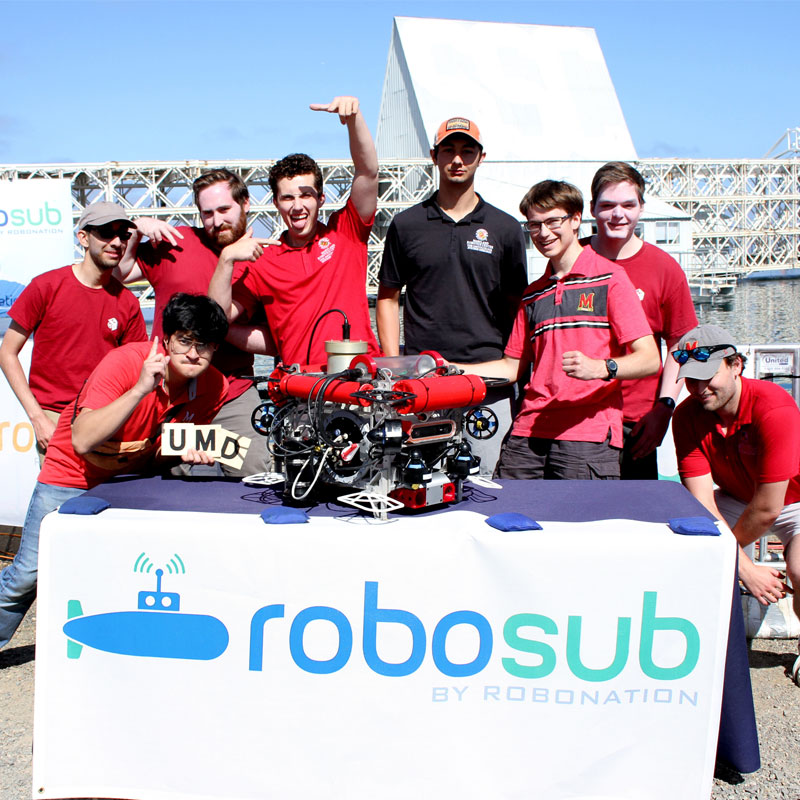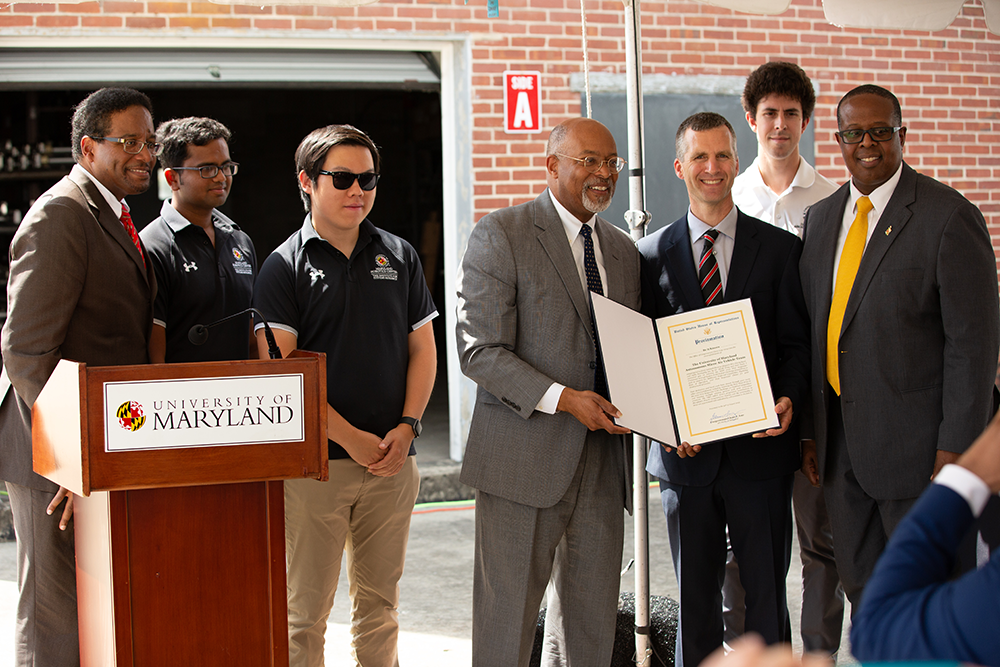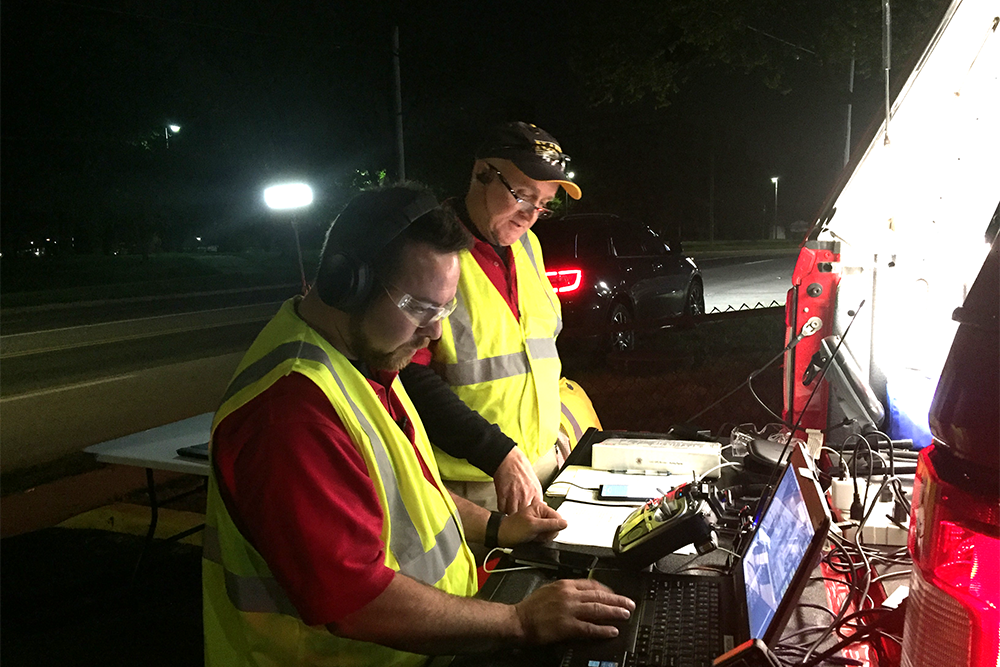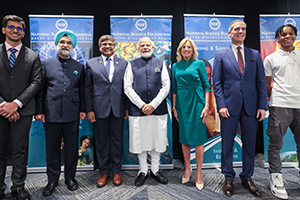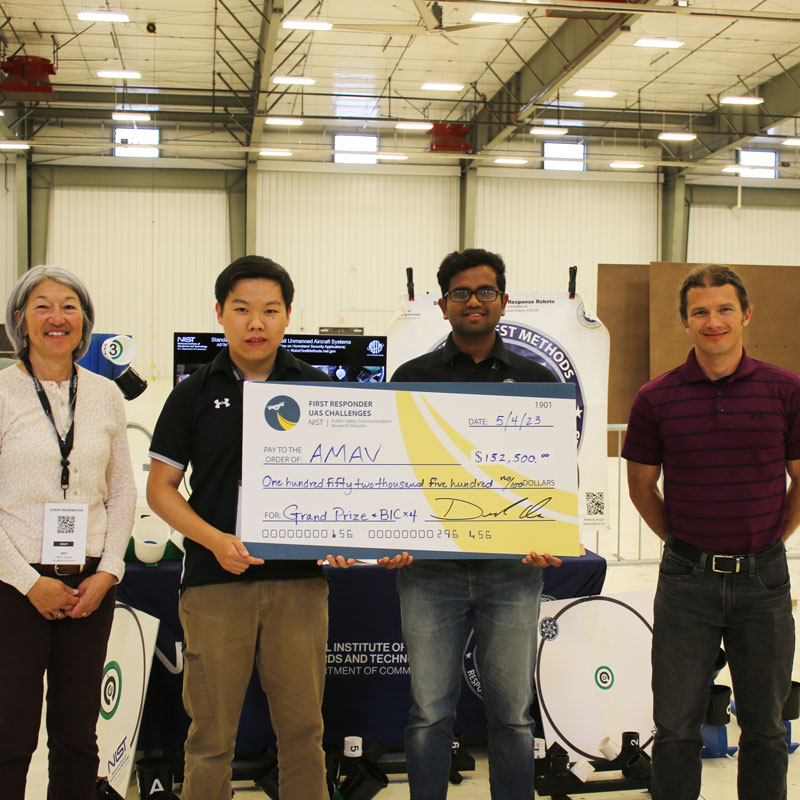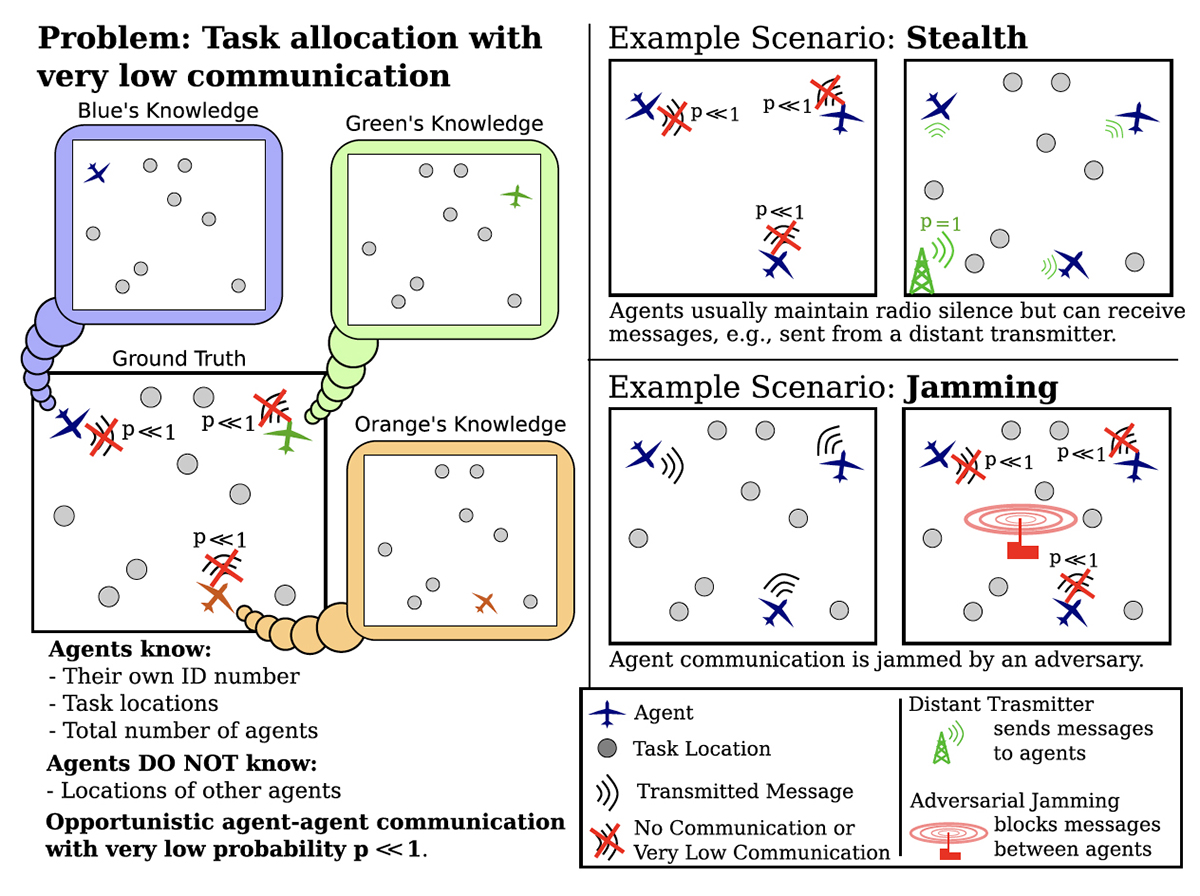News Story
UMD Team Honored for First Organ Transplant by Drone
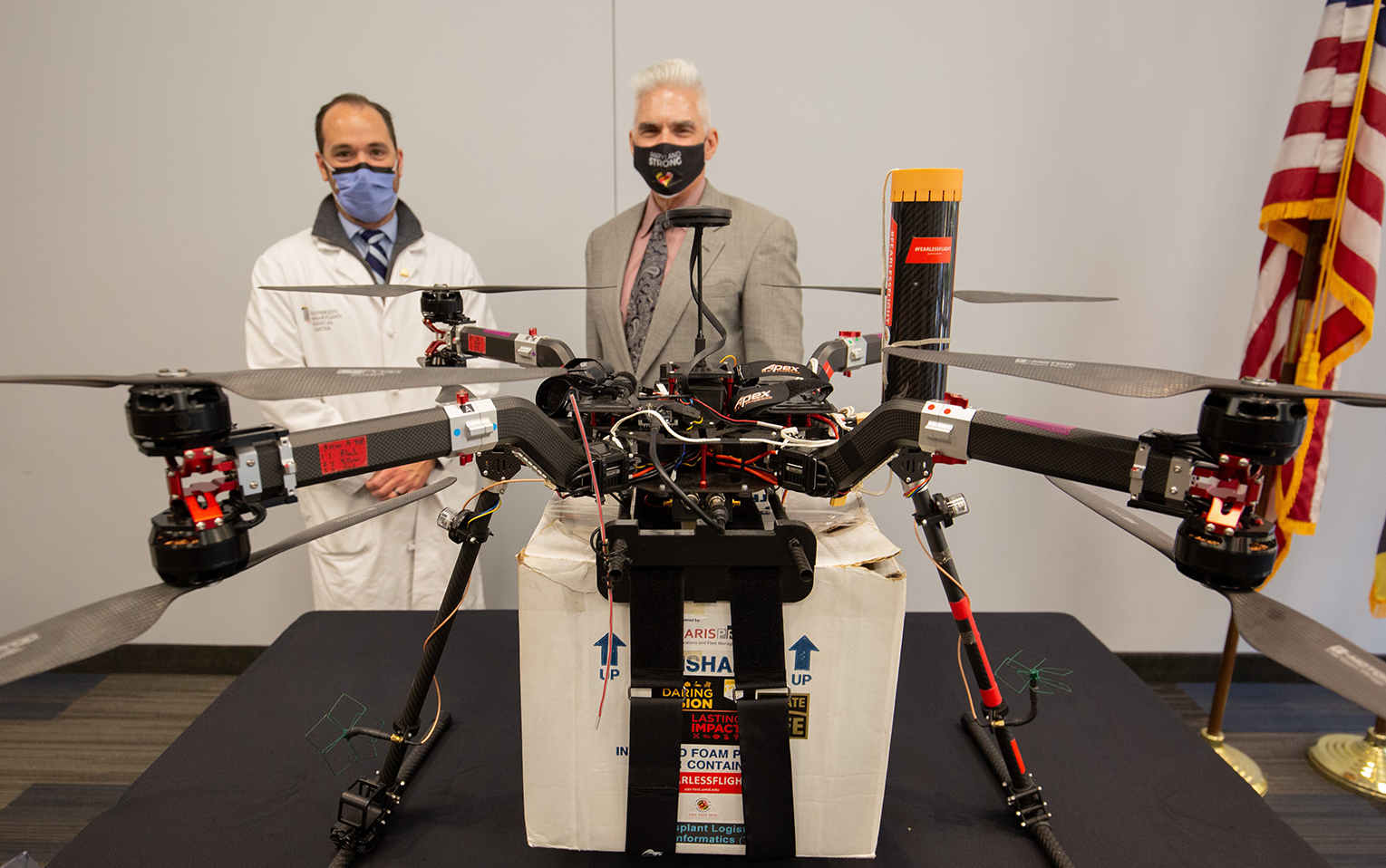
A team led by University of Maryland UAS Test Site Director Matt Scassero and University of Maryland Medical Center (UMMC) transplant surgeon Joseph Scalea has won the 2021 Helicopter Association International's (HAI) Golden Hour Award, the organization announced Tuesday (March 9). The award recognizes the efforts of an individual, group, or organization that, through a particular activity or contributions over time, has advanced the use of helicopters or UAS aircraft in the vital mission of air medical transport.
On the night of April 19, 2019, 44-year-old nursing assistant Trina Glispy was being prepped for kidney transplant surgery at UMMC. When she'd first learned she had a match—after eight years of waiting—she'd been offered a very special opportunity: the kidney could be delivered to the hospital by drone, a medical first that would pave the way for faster organ delivery. Excited by the chance to make a difference, Glispy agreed to the delivery option.
Now, as Glispy prepared for the surgery, UMD UAS Test Site pilots and engineers awaited the arrival of the kidney from the Living Legacy Foundation, Maryland’s organ procurement organization. Once secured, the kidney was launched in a custom UAS, complete with real-time monitoring equipment.
The drone flew 2.8 miles in 9.52 minutes at 300 ft. to the rooftop helipad at UMMC, faster than a car could have made the trip in Baltimore traffic. It landed smoothly with all organ-monitor readings in the green. The kidney was soon on its way to the operating room where Glispy waited.
The idea of organ transport by UAS was born two and a half years earlier. Scalea approached Scassero and UMD aerospace engineering chair Norman Wereley after hearing about a fixed-wing drone test his team had conducted carrying medical equipment across the Chesapeake Bay and asked if the same could be done for an organ.
The UMD Test Site team embraced the challenge. Based on a concept developed by Scalea, Scassero and Wereley, the drone was built from scratch with multiple redundancies all the way down to a parachute system that could be deployed either automatically or manually to protect the organ.
The team also designed the first-ever organ-monitoring system. The system tracks the state of the organ in transport in real time—recording and uploading temperature, pressure, and vibrations to the cloud for live monitoring. What’s more, upon landing, medical staff can remove the onboard SD memory card to review the same data.
“Nothing like this had ever been developed before,” Scassero says. “Currently, an organ is tested after harvest and then tested again after arrival to ensure it is still viable. With our monitoring system, we discovered the kidney we flew remained well within the parameters; I’d even say better than it would have in a car or helicopter. The hope is one day this monitoring technology will replace the need for that second biopsy.”
“Nothing like this had ever been developed before. Currently, an organ is tested after harvest and then tested again after arrival to ensure it is still viable. With our monitoring system, we discovered the kidney we flew remained well within the parameters; I’d even say better than it would have in a car or helicopter. The hope is one day this monitoring technology will replace the need for that second biopsy.”
Matt Scassero, director, UMD UAS Test Site
Glispy is doing very well and has returned to many of her former activities. The technology that made her recovery possible has also flourished. Members of the original team partnered with an investor to found MissionGO, a company that is developing and expanding this technology and increasing organ donation efficiency through a new software product.
True to the initiative that supported their research, the University of Maryland team is doing good.
HAI recognized previous recipients of the Salute to Excellence Awards through events at HAI HELI-EXPO®, the association’s annual trade show. Because of the pandemic, HAI is acknowledging the achievements of this year’s recipients through a variety of virtual events, including a series of webinars relevant to the subject of each award. Each individual recipient or team will also receive a trophy and publicity surrounding their work.
The UMD UAS Test Site, part of the aerospace engineering department at the A. James Clark School of Engineering, is a leading research and operatiional facility, with a mission of advacning the safe, reliable application of UAS technology in private industry as well as the public sector.
HAI is the professional trade association for the international helicopter industry. HAI members represent more than 3,000 aviation businesses and individuals who safely operate more than 4,500 helicopters approximately 2.3 million hours each year in more than 73 nations. HAI is dedicated to the promotion of the helicopter as a safe, effective method of commerce and to the advancement of the international helicopter community.
Published March 9, 2021

